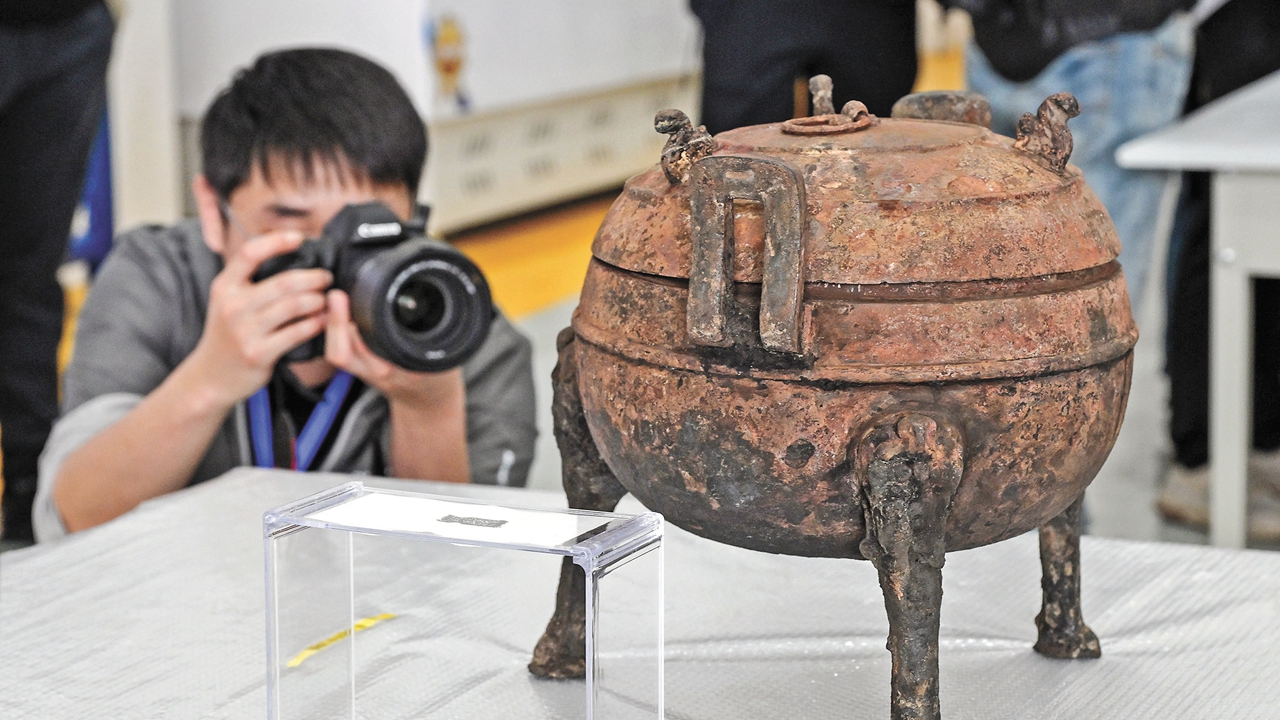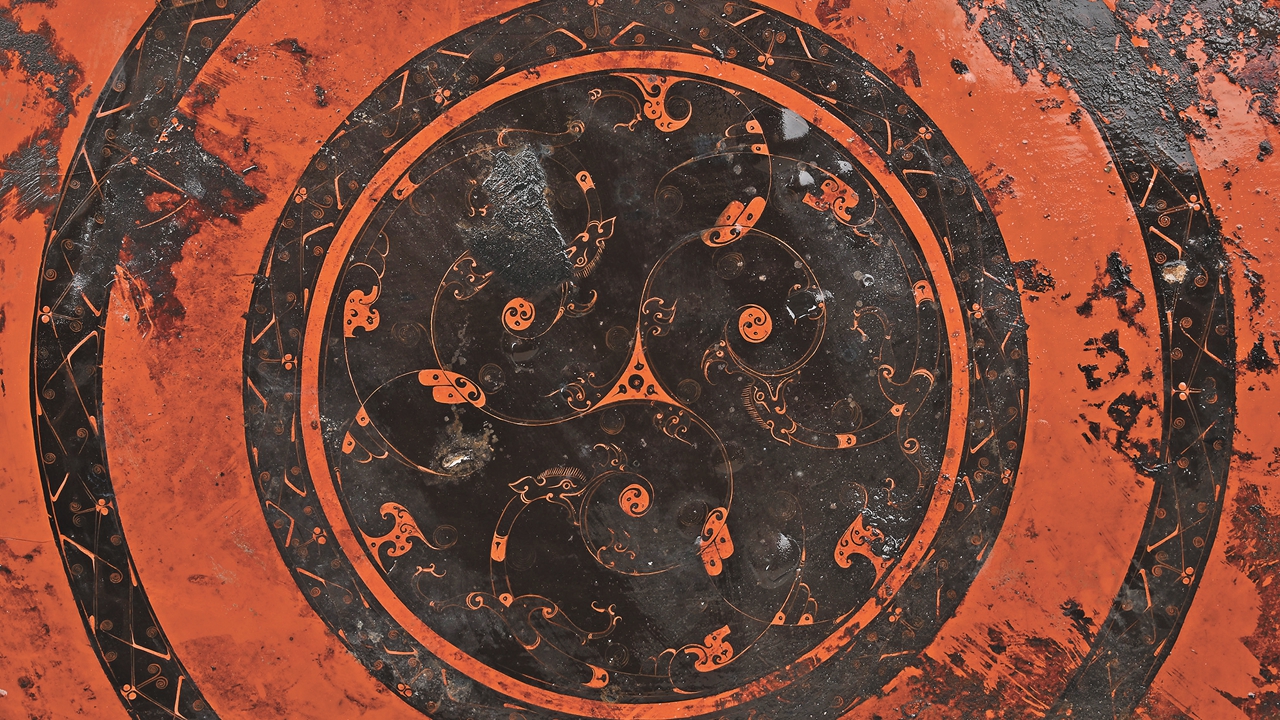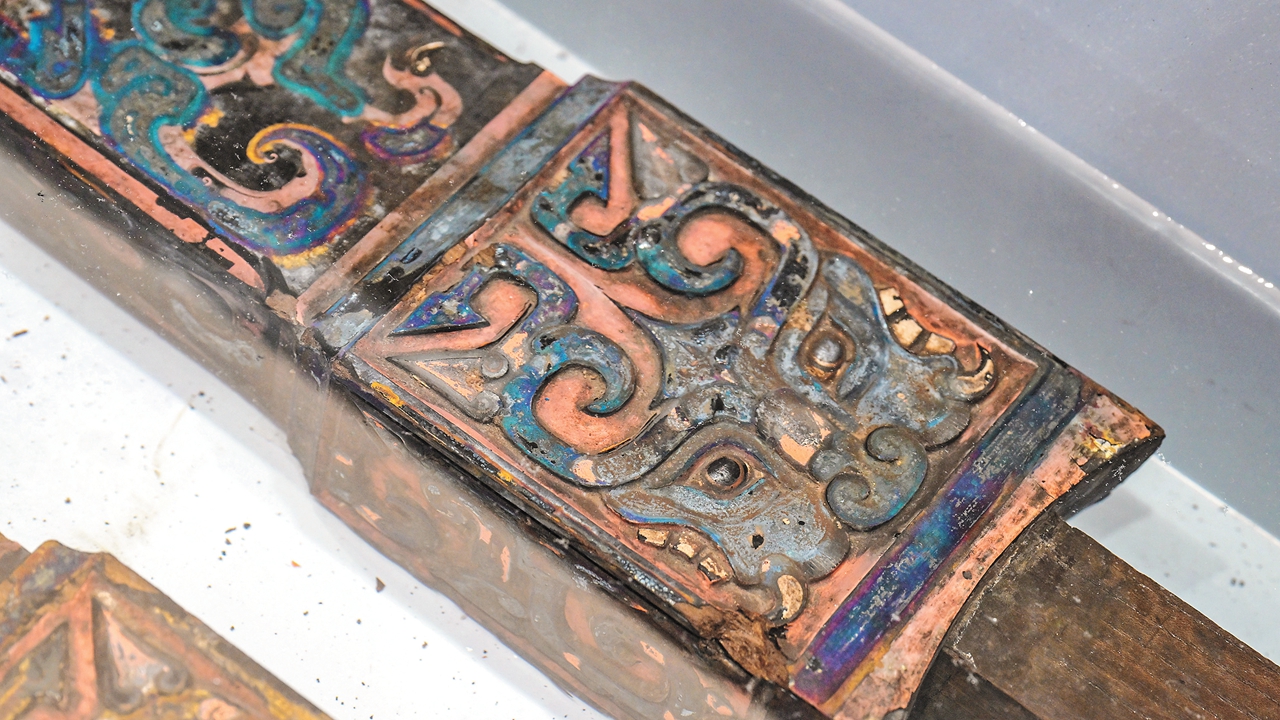Highest-level Chu State tomb excavated to date unveiled
Writer: | Editor: Zhang Chanwen | From: | Updated: 2024-04-18
The Wuwangdun tomb excavated in East China’s Anhui Province has been confirmed as the largest and highest-level tomb from ancient Chu State dating back over 2,200 years, the National Cultural Heritage Administration said Tuesday.
The administration made the announcement at a press conference in Huainan City, adding that the tomb discovered in Huainan is the most structurally complex of its kind.

A journalist takes photos of a bronze vessel unearthed from the Wuwangdun tomb in Huainan, Anhui Province on April 16. Photos by Xinhua
The site has an independent cemetery surrounded by a moat, covering an area of about 1.5 square kilometers. Inside the cemetery there are chariot and sacrifice pits and tombs accompanying the largest No. 1 tomb, believed to be owner of the cemetery.
Archaeologists focused on excavating the No. 1 tomb, which has been confirmed to be a square tomb with a tomb passage. In the center of the tomb pit, there are nine burial chambers arranged in a cross shape with one central chamber and eight side chambers surrounding it.


Lacquer items unearthed from the Wuwangdun tomb in Huainan, Anhui Province.
Bronze ritual artifacts, daily utensils, wooden figurines and musical instruments were unearthed from the side chambers. Ink inscriptions were also found on the cover boards of the burial chambers, according to Gong Xicheng, a researcher at the Anhui Provincial Institute of Cultural Relics and Archaeology.
In 241 B.C., King Kaolie of Chu moved the Chu State capital to Shouchun, now Shouxian County in Huainan, to keep away from the threat of the Qin State to its west. The Wuwangdun tomb is about 15 kilometers from Shouchun City ruins.
“This tomb provides systematic archaeological information for studying the high-ranking tomb system of Chu State and the historical and cultural aspects of the state after its eastern migration,” said Gong.
Researchers conducted on-site protection and multi-disciplinary studies of the unearthed artifacts, reinforcing and extracting fragile objects like the chamber planks, bamboo mats and lacquerware.
Concurrent analyses included carbon-14 dating, wood species identification, infrared analysis of the inscriptions, and material and manufacturing studies of the lacquerware and textiles.
The administration vowed to continue archaeological work, artifact preservation and interdisciplinary research at Wuwangdun, aiming to shed light on the Chu rituals, craftsmanship and cultural achievements. (Xinhua, China Daily)